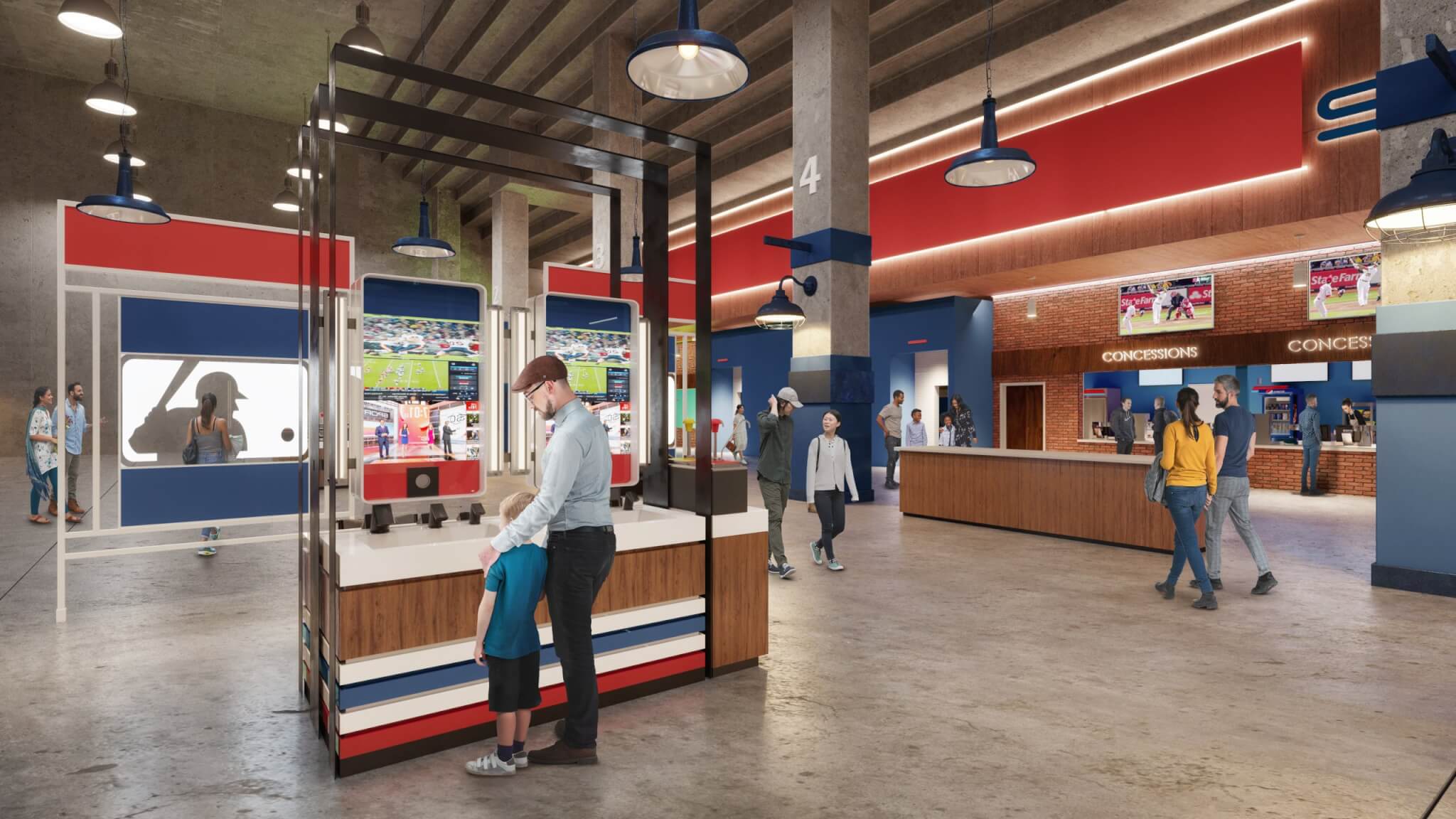
By Kim Darke-Miller, Senior Manager for Strategic Accounts, SLOAN
Up until now, handwashing has always taken place within the confines of the restroom. But what if hand sanitation and where it takes place were reimagined?
With the pandemic bringing added attention to the importance of hand hygiene and inspiring new handwashing innovation, that’s exactly what is underway right now. Commercial restroom manufacturers and architectural firms are partnering together to begin integrating handwashing into our existing environment. Places such as hospitality venues, restaurants, public transportation, sports stadiums, and schools are ideal for this endeavor.
For example, imagine going to a professional sporting event and having a quick and easy way to wash your hands without waiting in long lines at halftime or during breaks before getting food? Similarly, double-sided wash stations in restaurants can help bridge the space between the entry and lounge areas. Guests who check in with the host can then wash their hands while waiting for their table.
This new concept, known as “Sinks Beyond the Restroom,” is integrating handwashing with the public spaces that we engage with in our daily routines to promote hand hygiene outside the restroom. But what does this mean for contractors, and how do these installations impact their work with connecting to water and drain lines, complying with plumbing codes, and more?
See examples and videos of Sinks Beyond the Restroom.
Installation Elements to Consider
Sink stations outside the restroom require necessary components that may be a no-brainer when it comes to restroom infrastructure but might not be as readily available in traditional public spaces. Contractors and installers need to ensure that a drain is located nearby for wastewater to flow into, without impeding the rest of the public space. Typically, drainage and water-source locations dictate the area where sinks can be located.
Take airports, for example. Most airports already have drains integrated into areas prior to walking through security for people to dispose of liquids, making them an ideal location for handwashing stations. In areas with existing plumbing, placing handwashing stations near restrooms or restaurants makes installation even easier to accomplish.

However, installing handwashing stations against an outside wall or other areas could involve more extensive renovations. Integrating handwashing into the infrastructure of the concourse during new construction allows the architect/MEP to easily account for water lines, etc., making new installations ideal.
When it comes to new construction, architects and engineers can account for all water lines when designing floors to avoid slip and fall potential. In this instance, perforated nonslip flooring is an ideal specification to let water fall into a drain and then reclaim the water, while integrated hand dryers help keep water off the floor. While local codes vary by state, the future of handwashing is changing, and codes will certainly evolve with it.
However, there might be certain instances where a permanent installation just isn’t the right fit. That’s where new mobile handwashing stations come into play. Equipped with hands-free, sensor-operated technology, mobile handwashing stations are designed to enable more convenient handwashing options placed anywhere inside or outside a building where hygiene is essential.
Additional Applications
This Sinks Beyond the Restroom concept can be practiced even further. Office buildings present three critical opportunities where guests can benefit from a range of handwashing options as they enter and exit the building.
The first location is directly adjacent to the entry and takes the form of an individual vessel. The second stop integrates with the reception desk and combines handwashing with opportunities to engage with informational and educational content like building and tenant information. Lastly, the area adjacent to the elevators is important, as highly visible sinks are especially important near high-touch surfaces, such as elevator buttons.
Airport concourses also present opportunities for handwashing in the midst of a bustling environment to help travelers feel safe and confident while staying on schedule. Public handwashing stations can integrate useful travel information on monitors above the sink listing flight departure and arrival information, digital airport maps, city highlights, and more.
Lastly, implementing handwashing outlets throughout school corridors presents an opportunity to reinforce learnings in the classroom thanks to a series of fun and teachable moments that develop healthy lifelong habits. This will help reinforce proper handwashing for students coming to and from their lockers in between class or before lunch.
SLOAN and a leading architectural firm are teaming up to accomplish this handwashing beyond the restroom innovation. The two organizations began this journey by gathering dozens of market and industry experts across the country to form focus groups to determine how to best achieve this goal. SLOAN’s touch-free technology, together with its architectural prowess, now has the capability to deliver hands-free handwashing in environments where we engage in everyday activities.
For more information, visit www.sloan.com.


